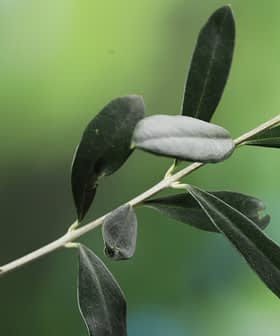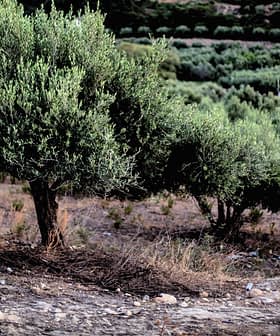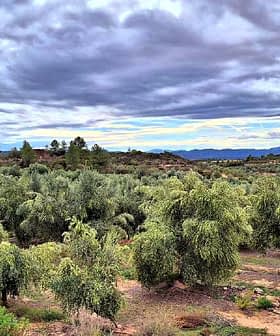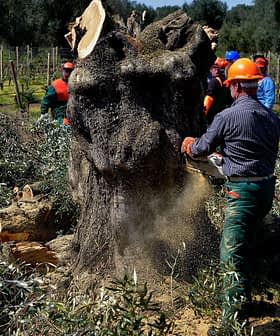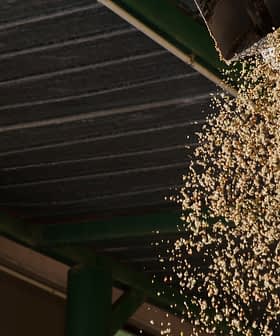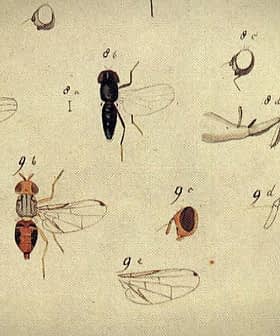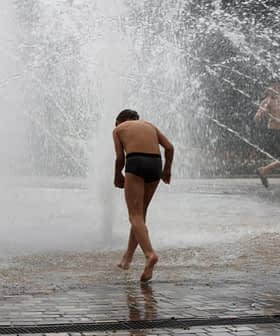International Workshop Addresses Climate Change Threats to Olive Trees
The International Olive Council and partners held a workshop in Italy to address the impact of climate change on olive genetics and olive tree resilience. The event focused on the importance of preserving genetic diversity in olive cultivation to develop new, climate-resilient cultivars and maintain the cultural heritage of olive farming. The workshop also highlighted the need for international collaboration and investment in modern irrigation systems to enhance the sustainability and quality of olive oil production.
The International Olive Council (IOC) and a growing global network of partners convened in Italy for a workshop to strengthen collaboration in olive genetics.
At the heart of the workshop was a critical issue: how to safeguard the future of the olive tree in a world increasingly defined by drought, heatwaves and pathogens.
According to an IOC note, the three-day event held in Rende, Calabria, marked a significant step forward in the olive sector’s efforts to build resilience against climate change.
We need targeted public investment in mechanization, water infrastructure and training. Without it, our olive sector will continue to decline.
More than 25 delegations from olive-growing countries participated in the event, organized in collaboration with Italy’s National Research Center for Olive, Fruit and Citrus Crops (Crea Ofa), and Ciheam Zaragoza, the Mediterranean agronomic institute based in Spain.
According to the IOC, key experts and institutions in olive genetics, plant breeding, and agricultural policy have strengthened their cooperation in defining new mitigation strategies, studying the impacts of climate change, and identifying and producing resilient genotypes.
Participants included IOC deputy executive director Abderraouf Laajimi, scientists from Italy’s National Research Council, olive producers and industry representatives, national and regional officials, and delegates from the United Nations Food and Agriculture Organization (FAO).
See Also:Olive Council Incorporates Germplasm Bank Into Global TreatyEnzo Perri, director of Crea Ofa, said the core objective of the workshop was to connect and coordinate the world’s most crucial olive germplasm collections.
“The idea is to create a network of all major collections recognized by the IOC and national governments,” Perri told Olive Oil Times. “Not just for cataloguing purposes, but to build a true international infrastructure for research and knowledge sharing.”
Germplasm banks are living libraries of genetic diversity. They are essential resources at a time when changing environmental conditions are putting a strain on olive trees that once thrived in the Mediterranean climate.
Rising temperatures, erratic rainfall and declining winter chill hours are becoming common across many Mediterranean regions, threatening flowering and fruit set.
In southern Italy, parts of Greece and Tunisia, among other regions, harvests have declined sharply as key climatic triggers for olive development fail to materialize.
“Drought is only part of the story,” Perri said. “We are also seeing problems caused by insufficient winter chill. Many olive cultivars require a cold dormancy period to flower properly in spring. Without it, productivity collapses.”
Adding to this is the rising threat of pathogens, particularly the bacterium Xylella fastidiosa, which has devastated olive groves in Puglia.
One of Crea Ofa’s most ambitious projects is an open-field experimental site in the heart of the infected area, where more than 250 olive varieties are cultivated side by side to assess their response to the disease.
“It’s a real living laboratory,” Perri said. “And it gives us a chance to test our assumptions under extreme environmental pressure.”
In his remarks, Laajimi stressed the strategic importance of conserving olive genetic resources as a key tool for adapting to climate change and preventing genetic erosion.
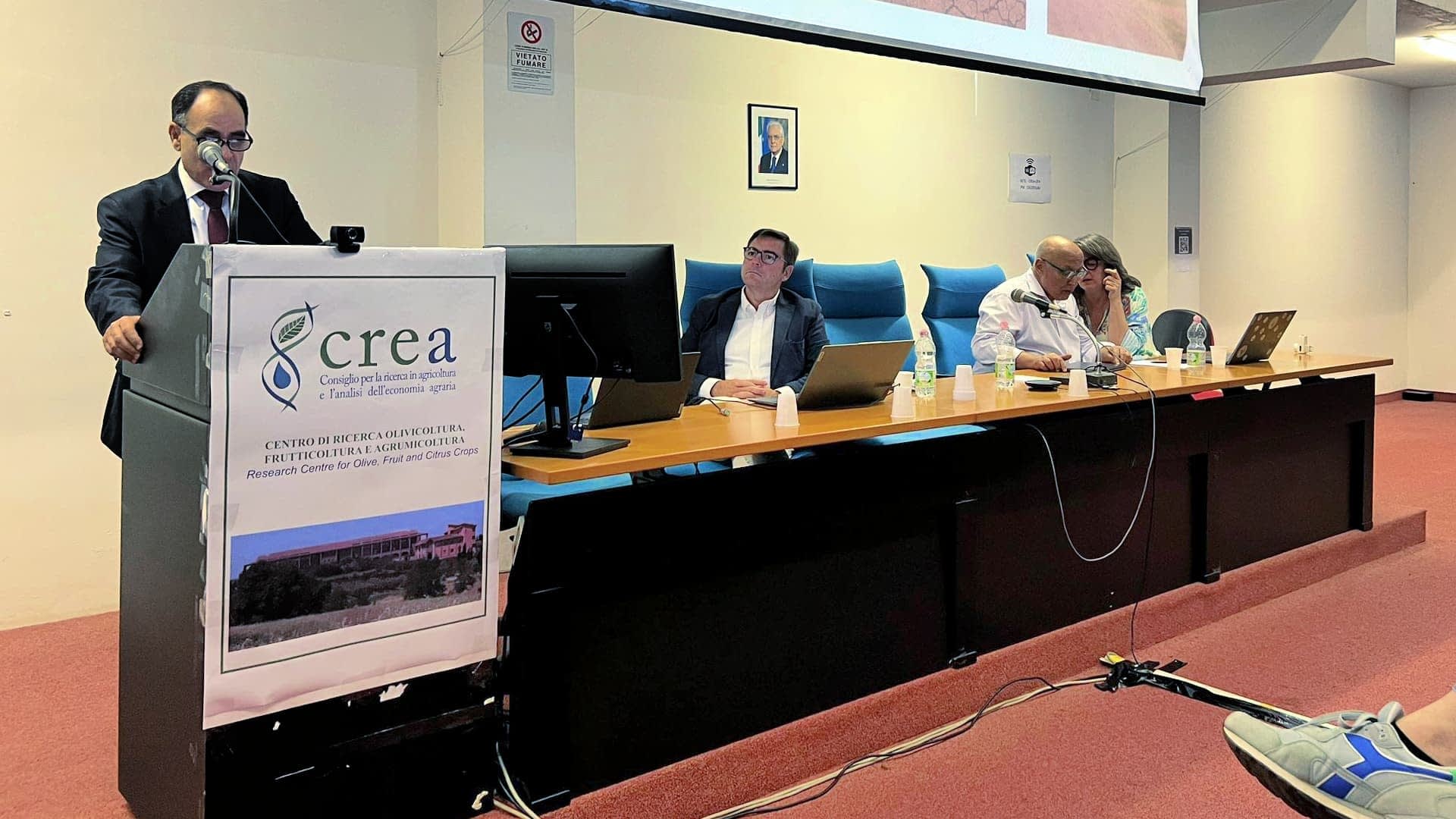
Abderraouf Laajim addressed a growing global network of partners working to strengthen collaboration in olive genetic and breeding research. (Photo: IOC)
Genetic erosion poses a growing threat to the future of olive cultivation. As traditional varieties are lost and replaced by a small number of high-yield cultivars, the genetic diversity crucial for resilience is disappearing.
This loss might undermine the ability to adapt to climate change, fight emerging pests and diseases and secure long-term sustainability.
According to the experts in Rende, preserving this biodiversity is essential for breeding new, climate-resilient cultivars and maintaining the cultural and agricultural heritage of olive farming across the Mediterranean and beyond.
Participants at the Rende workshop also saw the event as a call to rethink how countries collaborate or fail to do so.
“Spain has spent the last 30 years continuously investing in olive breeding programs, developing new varieties for super-intensive systems and disease resistance. Italy, by contrast, has remained largely static since the 1970s. We’ve lost momentum,” Perri said.
One notable exception is the Lecciana cultivar, a hybrid developed by Apulian professor Salvatore Camposeo in collaboration with researchers from Catalonia.
The result of a carefully planned crossing program, Lecciana has demonstrated strong adaptability and resilience, making it suitable for both traditional and intensive cultivation.
“This proves that targeted genetic work can deliver practical results,” Perri said. “But it shouldn’t be the exception, it should be the norm.”
Perri warned that Italy’s research infrastructure needs a renewed and coordinated national strategy. As an example, he noted that there are currently fewer than 30 researchers in the country specializing in olive genetics.
In an era of climate change, Perri argued, the scientifically sound use of resources in the Mediterranean basin is critical. Water and irrigation are central to this effort.
“In traditional narratives, olives are often described as drought-tolerant crops. But that’s only true to a point,” he said.
In increasingly arid regions such as the Ionian coasts of Calabria and Sicily, months may pass without rainfall.
Under such conditions, trees may flower but never set fruit, or olives may form and then fall prematurely. Similar problems are being reported across many Mediterranean regions.
“Emergency irrigation is no longer optional,” Perri warned. “Without it, many growers will have no harvest at all. And that’s not just a local issue, it’s a systemic one.”
Investing in modern, efficient irrigation systems is now crucial, not only in industrialized super-intensive groves but across the board.
“It’s needed to maintain baseline productivity and fruit quality, and therefore the quality of the olive oil,” Perri said.
“Our goal is not just to increase yields or resist disease. It’s to preserve and enhance the nutritional and sensory quality of olive oil,” he added. “That’s what gives our work meaning. Not just surviving the crisis, but producing olive oils that are healthier, tastier and more sustainable.”
Research and collaboration toward sustainable goals are already delivering significant impacts, particularly in the use of olive milling by-products.
“Olive mill wastewater, once seen as an environmental problem, is now being studied for its high content of polyphenols and antioxidants,” Perri said. “We’re realizing that the olive tree fits perfectly into a circular economy model. Nothing has to be wasted.”
Today, olive genetics research spans three main areas. The first involves exploring and conserving lesser-known local varieties that may carry traits functional for future breeding.
Second, the development of new resilient cultivars through controlled hybridization, such as the Lecciana. Third, the long-term potential of biotechnologies, particularly new genomic techniques.
Italy has already sequenced the full genome of the Leccino cultivar, a key step forward. However, applying gene editing remains difficult due to the olive tree’s resistance to in vitro regeneration.
“We’re not ready yet, but we will be,” Perri said. “And when we are, we’ll have new tools to accelerate the species’ improvement.”
According to Perri, the presence of an international institution such as the FAO at the Rende workshop reflects the olive tree’s global relevance as both an economic and nutritional resource for countries in North Africa, Latin America and Asia.
“FAO sees olive oil as part of the solution,” Perri explained. “It’s rich in polyphenols, vitamin E and healthy fats. It fits into sustainable diets and can support smallholder farmers. That’s why FAO strongly supports projects like this.”
For Italy, the stakes are particularly high. Despite soaring prices on international markets, many small and medium growers are struggling.
“They simply don’t have the capital to modernize,” Perri said. “We need targeted public investment in mechanization, water infrastructure and training. Without it, our olive sector will continue to decline.”

